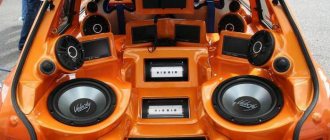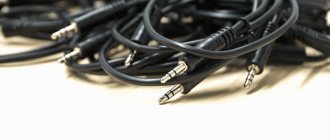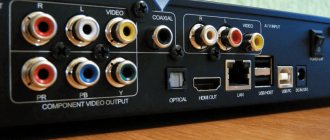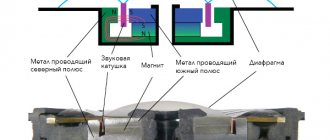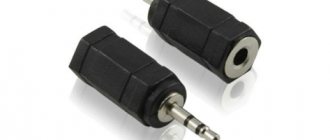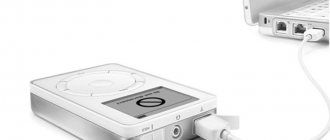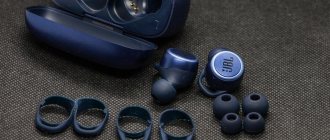The absence of shortages and a wide range of products from all corners of the globe has led to a massive filling of the market with goods of various categories, quality and level. The headphone market is no exception. A lazy buyer, having made a rash decision, easily says goodbye to his money, giving it away for the first model he liked. There is no desire to understand the issue, and as a result, a product is purchased that hardly justifies the initial requests. The presence of thousands of different models has led to the fact that buying those “one and only” headphones is not far from buying your first car in terms of difficulty in choosing.
In today’s article we will try to understand the question of what are the main categories of headphones on the market, what are their main differences and advantages.
Before I talk about all the modifications of the presented headphones, I will try to put myself in the shoes of a buyer who has put aside a certain amount and is ready to start buying right now. Our buyer is hardly familiar with the features of each category of headphones, but he has a little free time in order to understand the whole essence of the issue and then make the right choice.
Among the abundance of headphones, one of the main criteria for dividing them is the type of design . We recognize any product by its clothing, and it is the type of design that immediately catches our eye.
In-ear headphones.
This type of headphones is more commonly referred to as “button” or “in-ear” headphones. They are inserted directly into the ear and are one of the most common. The generally accepted standard was developed back in 1991 by engineers at Etymotic Research, and the ancestors of in-ear headphones were the audiological headphones used in research centers.
Among the accessories accompanying in-ear headphones, it is worth noting primitive ear pads - round pieces of foam rubber.
Their main task is not only to make wearing more comfortable, but also to improve the level of sound insulation.
Which headphones to choose for a child
Aside from the personal inconvenience, I think the big advantage of in-ear headphones is the ability to hear your surroundings. Previously, you could plug vacuum headphones into the subway and walk all the way home, enjoying good noise cancellation. Now, with the advent of electric scooter enthusiasts riding on the sidewalk, you can only safely listen to music at home, but with the advent of earbuds, this problem has disappeared. No matter how loud you turn the music on, you can always hear what is happening around you.
Which headphones to choose for a child.
Based on this, it seems to me that the earbuds are perfect for children. The child does not yet fully know how to navigate the surrounding space, so this solution will easily help the student to be always on the alert when various kinds of dangers arise. You also don’t have to worry about your child’s hearing; children love to listen to loud music. For example, my friend’s son loves this business so much that he learned to turn up the equalizer for louder sound.
In-ear headphones
Most often, in-ear headphones are confused with in-ear headphones, popularly called “plugs” or “vacuum”. In-ear headphones (IEM - In-Ear-Canalphone) are installed directly into the ear canal. Their fit in the human ear is much deeper than that of in-ear headphones.
The design of in-ear headphones is also borrowed from advances in the field of medicine, and the progenitor of this category of audio devices were hearing aids and headphone monitors, successfully used by musicians on stage for more than 20 years.
The main difference between in-ear headphones and in-ear headphones is improved sealing and sound concentration. The use of soft ear pads allows you to isolate music playback as much as possible from extraneous noise and reduce the level of amplitude distortion of the membrane by increasing the sound area.
Another distinctive feature of in-ear headphones is the availability of a wide range of tips . In a word, you see headphones with a characteristic soft spout - you can be sure that this is a representative of in-ear headphones.
The sore spot of in-ear headphones is the transmission of the high frequency range, which loses out to the booming and meaty bass.
Conclusion: In-ear headphones or “earbuds” and in-ear headphones – “plugs” – are two different types of headphones that fall under the same category of in-ear headphones.
The best droplet models
We advise you to familiarize yourself with the most popular options for wireless vacuum headphones.
These are Bluetooth headphones with a microphone. They are used for all types of mobile devices, including iPhone. Refers to plugs. Most of these models aim to reproduce frequencies between 20 Hz and 20 kHz.
Xiaomi Redmi AirDot
The device connects using Bluetooth 5.0 wireless communication. Supports A2DP, AVRCP, Hands free, Headset profiles. Operates within a radius of 10 m. It has no fastening, but is protected from moisture.
On-ear headphones
Over-ear headphones got their name for a reason. Their principle of fixation is to be fixed on the surface of the ear and pressed against it from the outside, and the sound source itself is located outside the auricle.
Due to the fact that on-ear headphones are located at a noticeable (by sound standards) distance from the ear canal, a higher volume level is required for their full sound. Over-ear headphones can have different types of fastening: using a behind-the-ear, or using an arched headband.
Headphone parts and their names
To understand the characteristics, you need to know what the parts of the device are called:
- The bowl is the body or outer part of the body. The bowls are attached to the ear hook or headband, which can be covered with leatherette on top and equipped with a soft insert.
- The ear cushion is a soft part responsible for sound insulation. In regular headphones it performs only this role, in in-ear headphones it prevents the cup from falling out of the ear.
- Internal and external mesh (installed on the front of the case and inside) are parts that perform a protective function, protecting against dust.
- Cable socket - only available on hybrid models. The wire is connected through a special connector and can be removed.
- A wire jack is a device with which equipment is connected to a designated input on a computer, laptop or smartphone.
When viewing a product before purchasing, pay attention to what devices a particular model is compatible with, what the size of the speakers and bowl is, and what the length of the cable is.
Over-ear headphones
Full-size headphones are rightfully considered the ideal headphones for home use . The peculiarity of their design is full ear coverage. High-quality sound is emphasized by good noise insulation. Moreover, by enveloping the ear, the ear pads create additional sound space.
Over-ear headphones are rarely equipped with a folding mechanism, so in terms of portability they are far from the best allies. In order to promote full-size headphones on the market, manufacturers use a pseudo-class of headphones that are close to on-ear headphones, but in terms of characteristics tend to be full-size. What you won’t do for the sake of popularization. “Demi-season” in music is bad, so you shouldn’t choose something “between overhead and full-size.”
What about the harm of "plugs"
There is an opinion that vacuum headphones are unsafe for use. Users are concerned about high pressure in a confined space, which can have a negative impact on their hearing.
“Earplugs” are often called the most dangerous and it is recommended to use other types of headphones. In fact, this is a myth.
You can harm your ears with absolutely any headphones, regardless of their design.
The pressure on the membrane does not come from the so-called “vacuum”. The music volume, which is set by the user himself, is to blame.
Monitor headphones
A separate category of headphones, which at first glance can be confused with full-size ones. You can really call monitor headphones full-size, because with their ear pads they completely cover the ear. The main signs that you are looking at monitor headphones: a large, powerful headband, considerable weight, a thick, often ring-shaped, long cord and the absence of any hint of portability.
The category of these headphones is intended exclusively for sound engineers, but not for music lovers. Monitor headphones have a wide frequency range and reproduce sound without unnecessary “embellishments” or post-equalization. In other words, your favorite songs that have delighted you for years with their sound may seem dull, boring and distorted on monitors.
Depending on what sound source is installed in the headphones, they are divided into 4 categories.
Best Cheap In-Ear Headphones
No matter what anyone says, the overwhelming majority of budget earbuds are superior in bass level to their inexpensive vacuum counterparts. Yes, in terms of noise insulation they are inferior to their competitors, but for a wide target audience they are still considered an effective solution. We tried to make a selection of good models, taking into account the weaknesses of a budget headset in this class. Naturally, we are talking about wired headphones, because we are considering solutions in the entry-level price category.
Panasonic RP-HV094
Our Top 10 In-Ear Headphones opens with the entry-level model of the Panasonic RP-HV094 series, which is suitable for a huge number of gadgets. Of course, it would be strange to use such a headset to connect to an Apple smartphone, but still. The headset has the most advanced dynamic drivers in its price category and a good design. Support for a frequency range from 20 to 20 thousand Hz is provided. Among the strengths we can note is good volume, which partly offsets poor sound insulation. Connection is made using a double-sided cable and a 3.5 mm Jack connector.
Pros:
- good volume;
- sensitivity level;
- probably the best speakers for this price;
- good design.
Minuses:
- sound insulation.
HUAWEI AM115
If you are looking for inexpensive earbuds with a good microphone, you should pay attention to the iconic HUAWEI AM115 model. This headset has a neat, aesthetic design. On each earcup you can find sound guides, compensation holes and metal meshes. The controls were placed on a wire leading to the right earpiece. With its help, you can adjust the volume, you can receive/end calls, and move on to the next song. In terms of control and sound quality, the model is only inferior to a couple of lines from its South Korean competitor. But they are more expensive.
Pros:
- good microphone;
- excellent control;
- good sound;
- low price.
Minuses:
- Ergonomics are not for everyone.
Samsung EO-EG920
Another model of affordable but good in-ear headphones that appealed to a huge target audience. In general, this is not surprising, because the developer is a South Korean electronics manufacturer. The developer himself positions this headset as an entry-level product with basic functionality and good dynamic drivers for this class. The diameter of the speakers is 12 mm with an impedance of 32 Ohms. Judging by customer reviews, this headset allows you to enjoy good volume even with low output stage power due to frequency amplification. This is a huge advantage of the Samsung EO-EG920 compared to its analogues, which cannot do anything when connected to weak phones. In addition, the manufacturer made sure to have a long cable of 1.2 meters with a durable straight plug.
Pros:
- sound amplification;
- good speakers;
- resistance level;
- build quality.
Minuses:
- not found.
Xiaomi Dual-Unit
If you have not yet decided which good earbuds to choose at a low cost, you should probably pay attention to the Xiaomi Dual-Unit model. This headset is Hi-Res Audio certified, indicating high-quality sound. In addition, the earbuds operate in the frequency range from 20 to 40 thousand Hz. According to customer reviews, the device perfectly reproduces high and smooth frequencies. For convenience, there is a good control panel, as well as a built-in microphone. Thanks to the L-shaped plug, maximum operating comfort is achieved. The design does not cause any complaints.
Pros:
- frequency range;
- smooth bottoms;
- build quality;
- Hi-Res Audio certificate.
Minuses:
- not found.
JBL T205
The best budget in-ear headphones of 2022 are the JBL T205 model, which is not surprising, knowing the reputation of this manufacturer. Despite its affordable price, this headset boasts support for JBL Pure Bass technology, a flat cable and a protective case included. The manufacturer offers four headset design options for users to choose from. The design of this headset has 12.5 mm emitters. Judging by the frequency response of actual tests, the headphones are excellent for modern electronic and club music. We are pleased with the robust design, as well as thoughtful controls: only one multimedia button is used to play music, stop and switch music tracks.
Pros:
- Pure Bass support;
- large speakers;
- the cable does not get tangled;
- simple controls.
Minuses:
- not found.
Dynamic
The most common type of headphones. They are based on an electrodynamic type of transformation. In a part inaccessible to the buyer without third-party tools, there is a membrane to which a coil of wire is connected. Under the influence of alternating current, the installed magnet creates a magnetic field that is transmitted to the membrane.
Despite the fact that from an acoustic point of view, this design is considered the most primitive and has a number of disadvantages, the improvement of technology and the use of new solutions by manufacturers make it possible to call dynamic headphones headphones with good sound quality.
Why are plugs so popular?
This type of headphones has earned great popular love due to its good noise insulation . In terms of this parameter, vacuum headphones and headsets are second only to models with active noise reduction, but at the same time they cost much less than more sophisticated devices.
The compactness of the “plugs” also plays an important role . Unlike on-ear headphones, vacuum headphones will fit into any pocket, they do not require a special case, and with prolonged use, neither your head nor your ears will hurt.
The final factor in favor of vacuum models is the better sound quality compared to regular earbuds like EarPods. With tight insulation, you can get decent bass, which is simply not audible on the included headphones of most smartphones.
Electrostatic (Electret)
Headphones belonging to the category of Hi-End devices. You won't find them in consumer electronics stores; they are not widely available. All because of the high cost, the lower limit of which is 2.5 - 3 thousand dollars.
The operating principle of electrostatic headphones is to use a very thin membrane located between two electrodes. Under the influence of high current, the membrane moves and creates sound vibrations. Electrostatic headphones have the highest quality sound, virtually free of distortion. A significant drawback of such headphones is the mandatory presence of an impressively sized amplifier.
Maintaining appearance and care
Maintaining a set of headphones in decent appearance can increase the quality of the initial “sealing” and the service life of the headphones.
First of all, remember that there is no better way to preserve the life of your headphones than by regularly cleaning your ear canal. For universal headphones, contamination of the tips promises the appearance of excess noise and deterioration in sound quality, because Small debris contributes to improper air distribution. To avoid this, you need to either replace the nozzles with new ones, or use special tools to clean them.
Clean your headphones and cable at least once a month. If you play sports with headphones, then you need to do this more often, especially in those areas where the wire touches the skin. This will make your headphones more durable.
Never use cleaning fluids or bleaches containing alcohol. All you need to do is use a damp cloth and soap.
To clean the tips, be sure to remove them from the headphones. To do this correctly without damaging them, grasp the nozzle with your thumb and forefinger and use a twisting motion to pull it out of the transducer nozzle. Do not pull on the attachments as this will often cause them to break and become damaged.
Remember that a headphone cable, like any other cable, will eventually become rough and crack. The more you take care of your headphones, the longer they will last you. However, different manufacturers use cables of different quality: an externally flimsy and poor-quality cable can sometimes be very durable, and sometimes the situation is completely the opposite. Ideally, in the future it is better to use a replacement cable; In addition, a high-quality (very) detachable cable can increase sound quality.
It is recommended to wash soft plastic attachments in warm, soapy water. Be careful not to allow moisture to enter; even if the headphones are wet once, you will not be able to properly repair them to their previous condition. If you do get your headphones wet, it is recommended to leave them in a ventilated area for 1–2 days—this will help the moisture evaporate.
Always wait until the headphones are completely dry before placing them in your ear.
Experimentally, it was revealed that when cleaning the headphone tips with hydrogen peroxide (in liquid for 15 minutes), their service life increases noticeably.
Isodynamic and orthodynamic
In pursuit of high-quality loudspeaker sound, an application for the so-called Hale driver in 1973 . It is this invention that underlies isodynamic headphones .
The emitted element is a rectangular membrane made of thin Teflon film coated with aluminum in the form of rectangular strips. This complex structure is located between two magnets with a strong magnetic field. The current drives the plate and it is these vibrations that the human ear hears. The advantage of isodynamic headphones is high accuracy and an impressive power reserve (especially relevant in the production of loudspeakers).
A type of Hale emitters are orthodynamic headphones. Their only difference is the use of a round membrane (in isodynamic it is rectangular).
Feel free to take the plugs and don’t worry
For example, well-proven Philips Fidelio S2 . They perfectly isolate from external noise (the set includes as many as 7 pairs of ear pads!), and you will listen to them at a lower volume compared to conventional headsets.
The model turned out to be very successful and meets all the requirements of modern “plugs”: high-quality sound, good noise insulation, compactness and an affordable price.
As a nice bonus, you will receive a convenient case for storing and carrying, an angled plug that will last longer, and a “noodle” cable, which is less prone to tangling and creasing.
Reinforcement
Armature headphones are headphones that feature an exclusively in-ear design. They are based on a U-shaped magnetic circuit, in the field of which there is an armature with a voice coil. The diffuser is attached directly to the armature. At the moment when current is applied to the voice coil, the armature leaves its resting state and sets the diffuser in motion.
Armature headphones have a high level of efficiency with compact dimensions. Due to the specific design of the emitter, armature headphones sound clearer and cleaner.
Conclusion: In-ear headphones can be dynamic. In-ear headphones can be dynamic or reinforced. Over-ear headphones are mainly represented by dynamic models. Over-ear headphones can be dynamic, electrostatic, iso- or orthodynamic.
We have more detailed material about armature headphones.
Depending on the design of the housing in which the headphone speakers are enclosed, they are divided into two categories: closed and open .
Frequency characteristics of IEMs
An interesting fact is that many people say that IEMs are full of detail, precision;
however, the range of most of these headphones, if you look at the characteristics, actually does not exceed 16kHz. Although the human ear's audible range of sound is somewhere in the region of 20Hz to 20,000Hz, most adults (after ~20 years of age) cannot actually hear sound above 16kHz; High frequencies are considered to be the range from 5kHz to 16kHz - all the details are there, with most of them in the lower region.
Perhaps smart and well-read listeners will object here, because although people cannot hear sound above 20kHz, they can feel the presence of ultrasound (harmonic distortion), which has a positive effect on SQ. However, given that almost all popular audio formats are limited to 20kHz, we can conclude that most music is already limited within this limit; and, as a result, you don’t need to trust the new sound from headphones if their range goes beyond 20kHz.
Open
Open-back headphones involve placing the speaker in a chamber equipped with slits, slits, or drapery. Thanks to this solution, open headphones have a “connection with the outside world.”
From the point of view of listening to music in urban mode, open-back headphones are safer. In addition to music, open-back headphones also allow ambient noise to pass through. Using open headphones avoids the air cushion effect, which complicates the operation of the membrane, creating additional acoustic distortion.
Conclusion: regardless of the type of design and the emitter used, all headphones can be either open or closed. Their type can be determined by the appearance of the ear pads and the head in which the speaker is located. “Semi-open” or “semi-closed” headphones in practice exist solely in the imagination of marketers.
Depending on how exactly the sound travels from the sound source to the emitter of the headphones, they are divided into two categories: wired and wireless .
Is it harmful to listen to music with vacuum headphones?
In-ear headphones have one huge advantage: high-quality noise reduction. This opportunity is ensured largely due to the closer location of the speaker in the inner canal of the ear, although we should not write off the developers’ technologies, they also make a big contribution to noise insulation.
Are vacuum headphones harmful?
Having understood the issue, I realized that the “plugs” themselves are safe and can be used with absolutely no harm to health. However, there is a nuance. If you listen to music at the highest possible volume, then vacuum “ears” will actually put more pressure on the eardrum. Simply because they are closer.
Many equipment manufacturers thought about this in advance. In many smartphone models, when you increase the headset volume above 70%, the smartphone warns you of possible hearing damage, and in some countries there are even laws requiring manufacturers to notify users.
Notification about the volume of music listening on a smartphone.
By following some tips, you can listen to music with earplugs and not be afraid of health problems:
- Do not listen to music at maximum volume constantly.
- Control the amount of time spent in headphones (4 hours a day).
- Don't fall asleep to music.
- Try to listen to music indoors, not outdoors.
Subscribe to us on Google News, where you will find a lot of useful information from the world of Android.
Wired
Wired headphones have high quality sound reproduction. Despite the fact that the entire evolution of headphones is inseparably linked with the wire directly connected to the emitter, in parallel with the development of the headphones themselves, the speaker cables used were also improved.
Wired headphones can include all of the above types of designs with different types of emitters and acoustic design.
Service life and non-warranty cases
Don't expect $500 headphones to last 5 times longer than $100 headphones.
The average service life is usually written in the warranty condition. High cost is not an indicator of durability. After a breakdown, in 90% of cases the buyer (if the breakdown meets the terms of the warranty agreement) is provided with new headphones, because replacement is unprofitable for the manufacturer, because requires a good technical base, which is often only available on the production line.
In general, it’s better to draw an analogy with cars. If you do not have enough financial resources, then do not buy expensive IEMs, because... they are no less susceptible to breakdowns, but require more care (due to their technical structure), everything: a more difficult search for parts, their high cost.
Wireless
Having decided that the consumer was tired of the ever-tangling wires of headphones, manufacturers decided to take the next step towards comfortable listening to music by creating wireless headphones.
There are four types of wireless headphones: infrared , radio , Bluetooth and Wi-Fi . There are also “hybrid” models on the market, using which the user can independently decide to connect the wire or take advantage of all the advantages of its absence. Wireless headphones are practically not used for sound recording, since they have an insignificant delay of a few milliseconds.
Whatever headphones you choose, remember that the main criterion should always be sound quality . As sound engineers say: “You need to listen to headphones with your ears,” and there is an undeniable truth in this. Decide exactly how you plan to use the headphones, then what style of music you consider preferable and confidently go to a store with a wide range of models.
If you want to look at the detailed history of the development of headphones: from the origins to the cutting-edge models, we recommend reading the material “The Evolution of Headphones.”
If you want to learn about the effect of noise canceling on humans, read “Active noise canceling in headphones and why it gives you headaches.”
Happy reading and happy shopping!
( 50 votes, overall rating: 4.80 out of 5)
